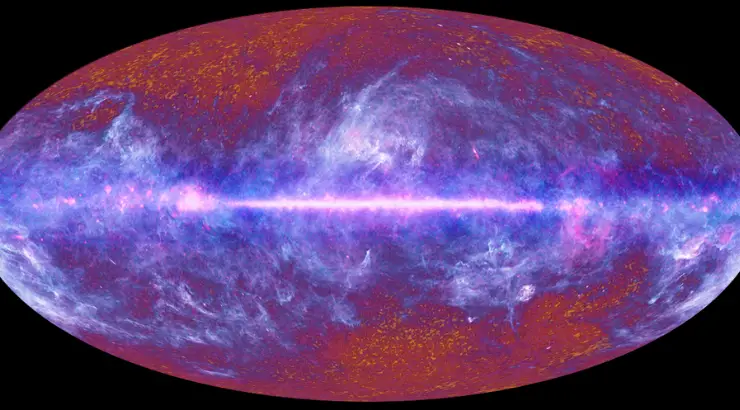The Universe
Scientists Say New Evidence of Spherical Universe is a “Cosmological Crisis”
We don’t know if the universe is round or flat.

(TMU) — The shape of the universe has been a hotly debated open question in physics and cosmology for a long time.
Based on Einstein’s theory of General Relativity and measurements of the “critical density” of the universe, most scientists have maintained that the universe is essentially flat—with no curvature—expanding infinitely out into nothing.
A new paper, however, reports measurements that suggest there may be major problems with the standard cosmological model. These measurements, based on Plank Observatory data from the mapping of the cosmic microwave background, point to the universe actually being spherical. The implications of this are that if you went far enough into the universe you would eventually end up where you started.
The round model of the universe is based on extra gravitational lensing discovered from the distant light of the Big Bang. This lensing indicates additional dark matter, which may be responsible for warping the universe into a curved, finite, shape. If there is more gravitational lensing than previously believed, this means there could be more matter and density.
Scientists calculate that if our universe surpasses a “critical density,” it will curve into a spherical, closed shape. Incredibly, the new paper says that based on Plank data, the universe is 41 times more likely to be closed and round.
Scientists are calling the new data a “cosmological crisis” that may require a new model of the universe.
Co-author Alessandro Melchiorri at the Sapienza University of Rome says:
“In a closed universe, these anomalies are more serious than we thought. If nothing is in agreement, we have to think hard about our model of the universe and its formation.”
This isn’t the first time this year scientists have cried “cosmological crisis.” Just last month, several different teams of physicists revealed that they’re getting inconsistent results when trying to measure the Hubble Constant, which aims to keep track of how rapidly the universe is expanding. Their data suggests anomalies in the standard model of cosmology, seemingly showing that the universe speeds up and slows based on the mysterious properties of dark matter and dark energy.
With regard to the shape of the universe, new data in the coming years will show whether or not the spherical universe measurements are faulty. The Simons Observatory being built in Chile will give us a more accurate picture of gravitational lensing. If the data bears out, though, and the shape of the universe is confirmed to be round, it would be a huge event in cosmology.
“If this is true, it would have profound implications on our understanding of the universe,” says David Spergel at Princeton University.
It bears mentioning that these calculations are attempting to comprehend the exact details of the nature of how our universe evolved, collecting data from the beginning of time and space. While models of the cosmos must be refined, sometimes majorly, it’s pretty incredible that our astronomical tools allow us to hunt down the earliest known energy and compare it to the shape of the universe billions of years later.
By Jake Anderson | Creative Commons | TheMindUnleashed.com
Typos, corrections and/or news tips? Email us at Contact@TheMindUnleashed.com
